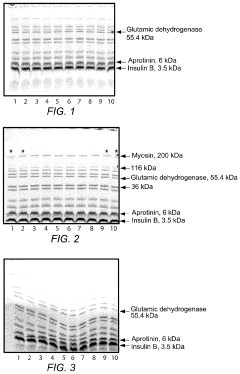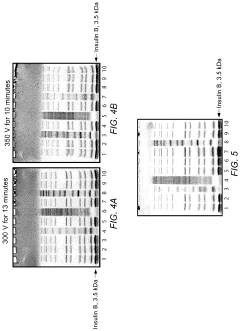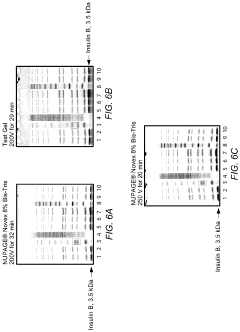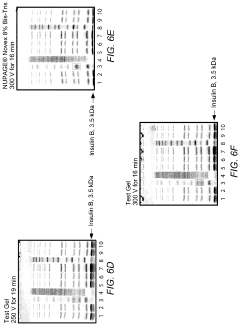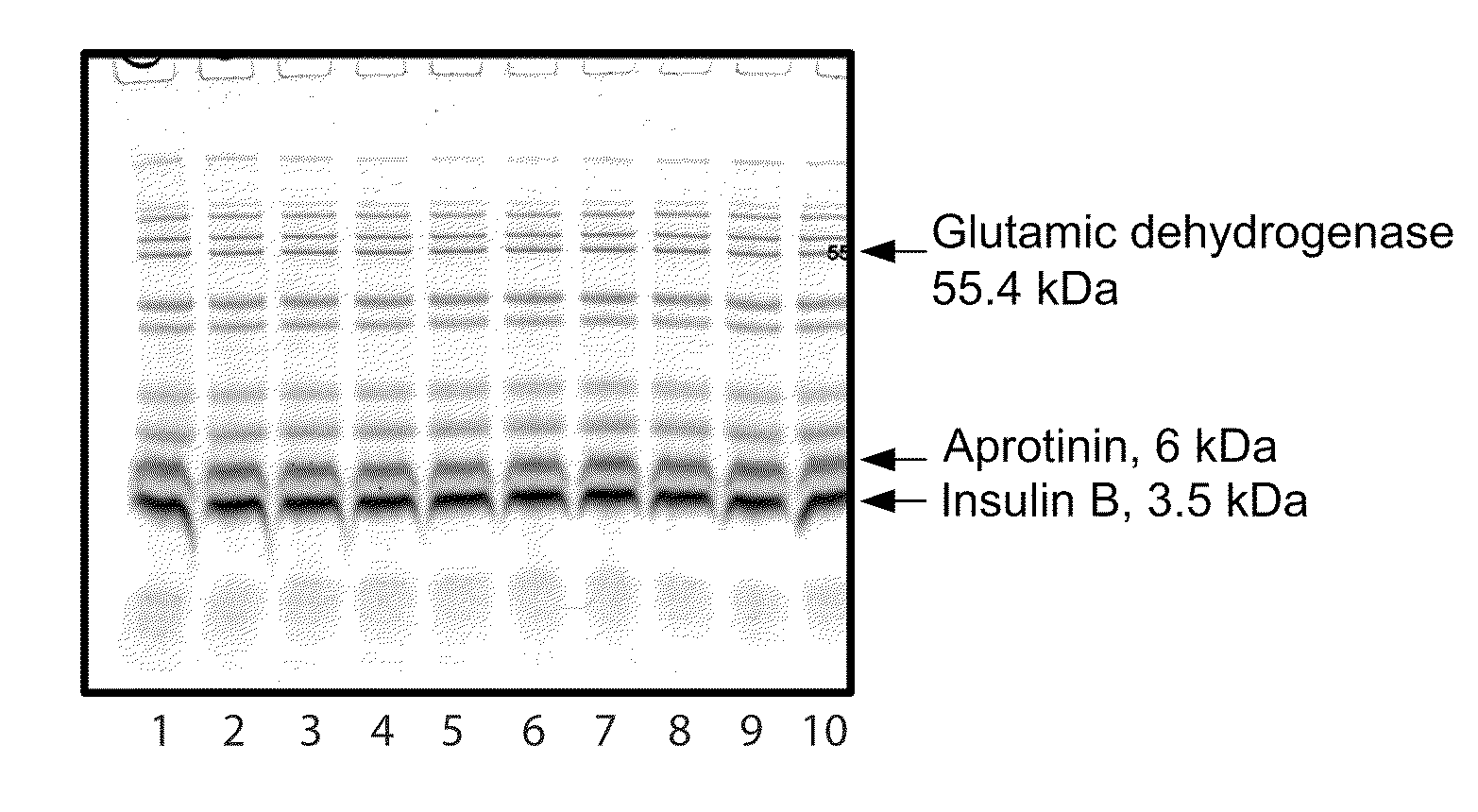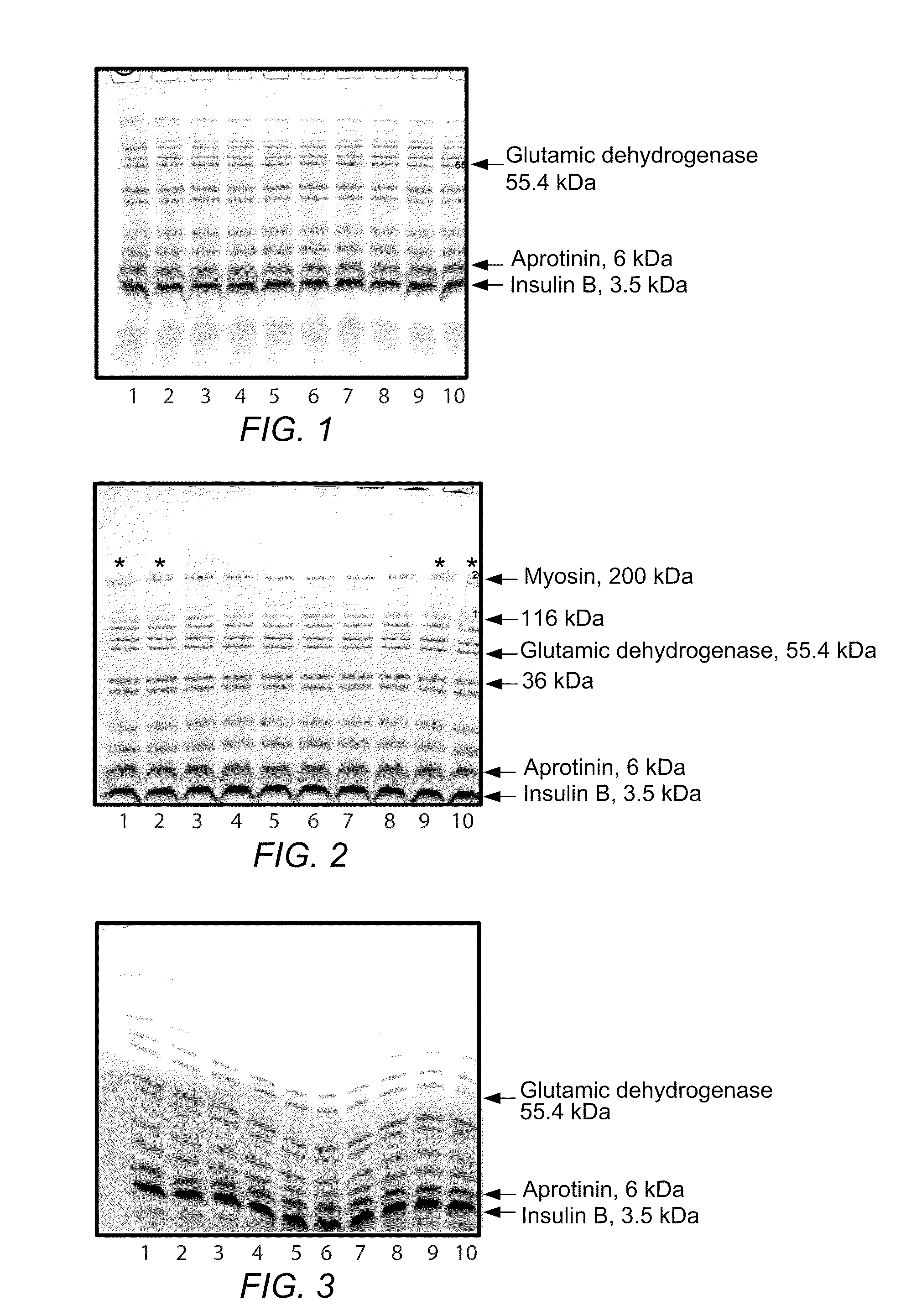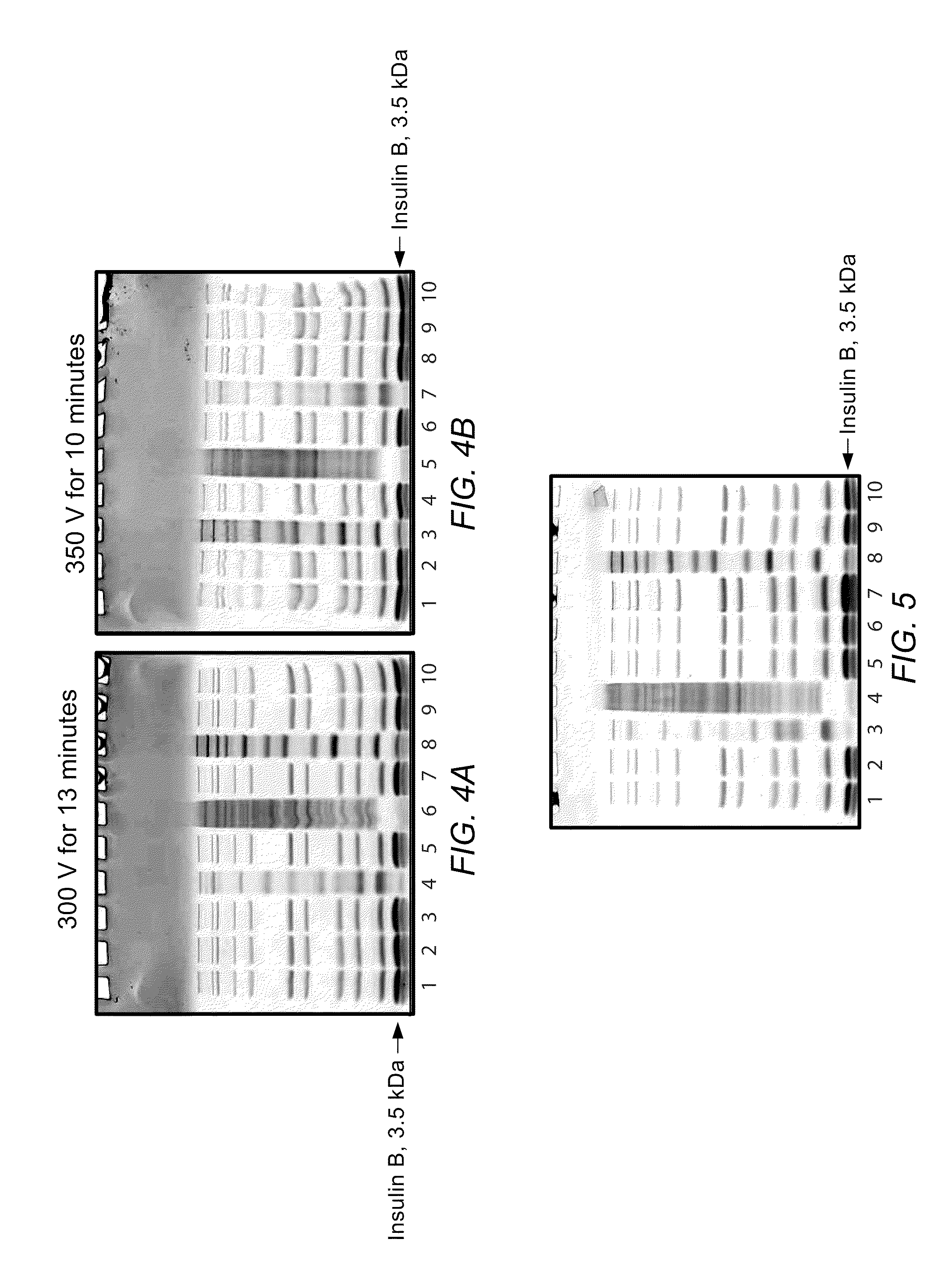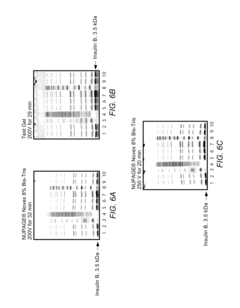How to Implement Gel Electrophoresis in High-Throughput Labs?
JUL 1, 20259 MIN READ
Generate Your Research Report Instantly with AI Agent
Patsnap Eureka helps you evaluate technical feasibility & market potential.
Gel Electrophoresis Evolution and Objectives
Gel electrophoresis has been a cornerstone technique in molecular biology since its inception in the 1960s. This method, which separates molecules based on their size and electrical charge, has undergone significant evolution to meet the demands of modern high-throughput laboratories. The journey of gel electrophoresis began with simple horizontal slab gels and has progressed to sophisticated automated systems capable of processing hundreds of samples simultaneously.
The primary objective in implementing gel electrophoresis in high-throughput labs is to maximize efficiency without compromising accuracy. This involves optimizing every step of the process, from sample preparation to result analysis. High-throughput labs aim to increase sample throughput, reduce manual handling, and integrate the technique with other automated processes.
One of the key evolutionary steps has been the development of capillary electrophoresis, which allows for faster separation and higher resolution. This technique has been further refined to create multicapillary systems, enabling parallel processing of multiple samples. The advent of microfluidic devices has also pushed the boundaries of miniaturization and integration, allowing for lab-on-a-chip applications that significantly reduce sample and reagent volumes.
Another crucial development has been the improvement in detection methods. From traditional ethidium bromide staining to more sensitive fluorescent dyes and real-time detection systems, the ability to visualize and quantify separated molecules has become more precise and efficient. This has been complemented by advancements in imaging technology, with high-resolution digital cameras and sophisticated image analysis software enhancing data collection and interpretation.
The integration of robotics and automation has been a game-changer for high-throughput labs. Automated gel loading systems, programmable power supplies, and robotic sample handlers have dramatically increased the number of samples that can be processed in a given time frame. These systems not only boost productivity but also improve reproducibility by minimizing human error.
Looking forward, the objectives for gel electrophoresis in high-throughput settings include further miniaturization, increased parallelization, and seamless integration with other analytical techniques. There is a push towards developing "smart" systems that can adapt separation parameters in real-time based on sample characteristics. Additionally, there is a growing focus on sustainability, with efforts to reduce waste and energy consumption in electrophoresis processes.
The primary objective in implementing gel electrophoresis in high-throughput labs is to maximize efficiency without compromising accuracy. This involves optimizing every step of the process, from sample preparation to result analysis. High-throughput labs aim to increase sample throughput, reduce manual handling, and integrate the technique with other automated processes.
One of the key evolutionary steps has been the development of capillary electrophoresis, which allows for faster separation and higher resolution. This technique has been further refined to create multicapillary systems, enabling parallel processing of multiple samples. The advent of microfluidic devices has also pushed the boundaries of miniaturization and integration, allowing for lab-on-a-chip applications that significantly reduce sample and reagent volumes.
Another crucial development has been the improvement in detection methods. From traditional ethidium bromide staining to more sensitive fluorescent dyes and real-time detection systems, the ability to visualize and quantify separated molecules has become more precise and efficient. This has been complemented by advancements in imaging technology, with high-resolution digital cameras and sophisticated image analysis software enhancing data collection and interpretation.
The integration of robotics and automation has been a game-changer for high-throughput labs. Automated gel loading systems, programmable power supplies, and robotic sample handlers have dramatically increased the number of samples that can be processed in a given time frame. These systems not only boost productivity but also improve reproducibility by minimizing human error.
Looking forward, the objectives for gel electrophoresis in high-throughput settings include further miniaturization, increased parallelization, and seamless integration with other analytical techniques. There is a push towards developing "smart" systems that can adapt separation parameters in real-time based on sample characteristics. Additionally, there is a growing focus on sustainability, with efforts to reduce waste and energy consumption in electrophoresis processes.
High-Throughput Lab Market Analysis
The high-throughput lab market has experienced significant growth in recent years, driven by increasing demand for efficient and automated laboratory processes. Gel electrophoresis, a fundamental technique in molecular biology, has become a critical component of high-throughput operations. The market for high-throughput gel electrophoresis systems is expected to continue expanding as research institutions, pharmaceutical companies, and diagnostic laboratories seek to enhance their productivity and reduce turnaround times.
The adoption of high-throughput gel electrophoresis systems is particularly pronounced in genomics and proteomics research, where large-scale DNA and protein analysis is essential. These systems offer substantial advantages over traditional manual methods, including increased sample throughput, improved reproducibility, and reduced labor costs. As a result, the market has seen a shift towards automated platforms that can handle multiple samples simultaneously and integrate seamlessly with other laboratory workflows.
Key market drivers include the growing emphasis on personalized medicine, which requires extensive genetic analysis, and the rising prevalence of chronic diseases necessitating large-scale diagnostic testing. Additionally, advancements in bioinformatics and data analysis tools have further fueled the demand for high-throughput systems capable of generating and processing vast amounts of data quickly and accurately.
The market landscape is characterized by a mix of established players and innovative start-ups. Major life science companies have invested heavily in developing comprehensive high-throughput solutions, while smaller firms often focus on niche applications or novel technologies to differentiate themselves. Competition in this space is intense, with companies vying to offer the most efficient, reliable, and user-friendly systems.
Geographically, North America and Europe lead the high-throughput lab market, owing to their well-established research infrastructure and significant R&D investments. However, Asia-Pacific regions, particularly China and India, are emerging as rapidly growing markets due to increasing government funding for life sciences research and the expansion of biotechnology and pharmaceutical industries in these countries.
Despite the positive growth trajectory, the high-throughput lab market faces challenges such as the high initial investment required for advanced systems and the need for specialized training to operate complex equipment. Additionally, concerns about data quality and reproducibility in high-throughput environments have led to increased scrutiny and demand for robust quality control measures.
Looking ahead, the market is poised for further innovation, with trends pointing towards miniaturization, increased automation, and integration of artificial intelligence for data analysis. These advancements are expected to drive the development of more sophisticated high-throughput gel electrophoresis systems, capable of handling even greater sample volumes with improved accuracy and speed.
The adoption of high-throughput gel electrophoresis systems is particularly pronounced in genomics and proteomics research, where large-scale DNA and protein analysis is essential. These systems offer substantial advantages over traditional manual methods, including increased sample throughput, improved reproducibility, and reduced labor costs. As a result, the market has seen a shift towards automated platforms that can handle multiple samples simultaneously and integrate seamlessly with other laboratory workflows.
Key market drivers include the growing emphasis on personalized medicine, which requires extensive genetic analysis, and the rising prevalence of chronic diseases necessitating large-scale diagnostic testing. Additionally, advancements in bioinformatics and data analysis tools have further fueled the demand for high-throughput systems capable of generating and processing vast amounts of data quickly and accurately.
The market landscape is characterized by a mix of established players and innovative start-ups. Major life science companies have invested heavily in developing comprehensive high-throughput solutions, while smaller firms often focus on niche applications or novel technologies to differentiate themselves. Competition in this space is intense, with companies vying to offer the most efficient, reliable, and user-friendly systems.
Geographically, North America and Europe lead the high-throughput lab market, owing to their well-established research infrastructure and significant R&D investments. However, Asia-Pacific regions, particularly China and India, are emerging as rapidly growing markets due to increasing government funding for life sciences research and the expansion of biotechnology and pharmaceutical industries in these countries.
Despite the positive growth trajectory, the high-throughput lab market faces challenges such as the high initial investment required for advanced systems and the need for specialized training to operate complex equipment. Additionally, concerns about data quality and reproducibility in high-throughput environments have led to increased scrutiny and demand for robust quality control measures.
Looking ahead, the market is poised for further innovation, with trends pointing towards miniaturization, increased automation, and integration of artificial intelligence for data analysis. These advancements are expected to drive the development of more sophisticated high-throughput gel electrophoresis systems, capable of handling even greater sample volumes with improved accuracy and speed.
Current Challenges in High-Throughput Gel Electrophoresis
Despite the widespread adoption of gel electrophoresis in molecular biology laboratories, implementing this technique in high-throughput settings presents several significant challenges. One of the primary obstacles is the time-consuming nature of traditional gel electrophoresis methods, which can become a bottleneck in large-scale operations. The manual preparation of gels, loading of samples, and subsequent analysis of results are labor-intensive processes that do not easily scale to meet the demands of high-throughput laboratories.
Another major challenge is the inconsistency in gel quality and reproducibility when scaling up operations. Variations in gel composition, polymerization, and running conditions can lead to inconsistent results across multiple runs, compromising data reliability in high-throughput environments. This variability becomes more pronounced as the number of samples and gels increases, making it difficult to maintain standardized protocols and achieve consistent results across large-scale experiments.
The limited throughput of conventional gel electrophoresis systems also poses a significant hurdle. Most standard systems can only accommodate a finite number of samples per run, which is insufficient for laboratories processing thousands of samples daily. This limitation often necessitates multiple runs, leading to increased time and resource consumption, as well as potential variations between batches.
Automation of gel electrophoresis processes in high-throughput settings is another critical challenge. While automated systems for sample loading and gel imaging exist, fully integrating these with other high-throughput laboratory processes remains complex. The need for seamless integration with upstream sample preparation and downstream data analysis workflows adds another layer of complexity to implementing gel electrophoresis at scale.
Data management and analysis present additional challenges in high-throughput gel electrophoresis. The large volume of image data generated requires robust storage solutions and sophisticated image analysis software capable of handling high-throughput data sets. Extracting meaningful information from numerous gel images and integrating this data with other experimental results demands advanced bioinformatics tools and data management systems.
Furthermore, the cost-effectiveness of gel electrophoresis in high-throughput settings is a concern. While the technique is relatively inexpensive for small-scale applications, the costs associated with reagents, equipment, and labor can escalate significantly when scaled up to high-throughput levels. This economic factor often necessitates a careful cost-benefit analysis when considering gel electrophoresis for large-scale operations.
Lastly, environmental considerations and waste management become more prominent challenges in high-throughput gel electrophoresis. The increased use of potentially harmful chemicals and the generation of large amounts of gel waste require careful handling and disposal procedures, adding to the operational complexity and environmental impact of high-throughput laboratories.
Another major challenge is the inconsistency in gel quality and reproducibility when scaling up operations. Variations in gel composition, polymerization, and running conditions can lead to inconsistent results across multiple runs, compromising data reliability in high-throughput environments. This variability becomes more pronounced as the number of samples and gels increases, making it difficult to maintain standardized protocols and achieve consistent results across large-scale experiments.
The limited throughput of conventional gel electrophoresis systems also poses a significant hurdle. Most standard systems can only accommodate a finite number of samples per run, which is insufficient for laboratories processing thousands of samples daily. This limitation often necessitates multiple runs, leading to increased time and resource consumption, as well as potential variations between batches.
Automation of gel electrophoresis processes in high-throughput settings is another critical challenge. While automated systems for sample loading and gel imaging exist, fully integrating these with other high-throughput laboratory processes remains complex. The need for seamless integration with upstream sample preparation and downstream data analysis workflows adds another layer of complexity to implementing gel electrophoresis at scale.
Data management and analysis present additional challenges in high-throughput gel electrophoresis. The large volume of image data generated requires robust storage solutions and sophisticated image analysis software capable of handling high-throughput data sets. Extracting meaningful information from numerous gel images and integrating this data with other experimental results demands advanced bioinformatics tools and data management systems.
Furthermore, the cost-effectiveness of gel electrophoresis in high-throughput settings is a concern. While the technique is relatively inexpensive for small-scale applications, the costs associated with reagents, equipment, and labor can escalate significantly when scaled up to high-throughput levels. This economic factor often necessitates a careful cost-benefit analysis when considering gel electrophoresis for large-scale operations.
Lastly, environmental considerations and waste management become more prominent challenges in high-throughput gel electrophoresis. The increased use of potentially harmful chemicals and the generation of large amounts of gel waste require careful handling and disposal procedures, adding to the operational complexity and environmental impact of high-throughput laboratories.
Current High-Throughput Gel Electrophoresis Solutions
01 Gel composition and preparation
Gel electrophoresis involves the use of specialized gel compositions. These gels are typically made from agarose or polyacrylamide, with varying concentrations depending on the size of molecules to be separated. The preparation process includes dissolving the gel material, casting it into a mold, and allowing it to solidify. Additives may be incorporated to enhance separation or visualization of samples.- Gel composition and preparation: Gel electrophoresis involves the use of specialized gel compositions. These gels are typically made from materials such as agarose or polyacrylamide. The preparation of these gels is crucial for achieving optimal separation of molecules. Factors such as gel concentration, buffer composition, and additives can be adjusted to enhance resolution and separation efficiency.
- Electrophoresis apparatus design: The design of gel electrophoresis apparatus plays a significant role in the effectiveness of the technique. Various innovations in apparatus design focus on improving sample loading, buffer circulation, and temperature control. Some designs incorporate features for multiple sample runs or specialized applications such as two-dimensional electrophoresis.
- Detection and analysis methods: Advancements in detection and analysis methods have enhanced the capabilities of gel electrophoresis. These include fluorescent labeling techniques, image analysis software, and integration with mass spectrometry. Some innovations focus on real-time monitoring of electrophoresis progress and automated data interpretation.
- Microfluidic and miniaturized systems: Miniaturization of gel electrophoresis systems has led to the development of microfluidic devices. These systems offer advantages such as reduced sample volume, faster analysis times, and potential for integration with other analytical techniques. Some designs incorporate novel materials or fabrication methods to enhance performance.
- Specialized electrophoresis techniques: Various specialized electrophoresis techniques have been developed for specific applications. These include pulsed-field gel electrophoresis for large DNA molecules, capillary electrophoresis for high-resolution separations, and isoelectric focusing for protein analysis. Some innovations focus on combining multiple techniques or adapting gel electrophoresis for unique sample types.
02 Electrophoresis apparatus design
The design of gel electrophoresis apparatus is crucial for efficient separation. Key components include buffer chambers, electrodes, and a power supply. Advanced designs may incorporate features such as cooling systems, multiple gel lanes, and integrated imaging systems. Innovations in apparatus design focus on improving resolution, reducing run times, and enhancing user-friendliness.Expand Specific Solutions03 Sample loading and running conditions
Proper sample loading and optimized running conditions are essential for successful gel electrophoresis. Techniques include the use of loading buffers, well formation in gels, and careful sample application. Running conditions such as voltage, current, and duration are adjusted based on the sample type and desired separation. Innovations in this area aim to improve sample resolution and reduce analysis time.Expand Specific Solutions04 Detection and visualization methods
Various methods are employed for detecting and visualizing separated molecules in gel electrophoresis. These include staining techniques (e.g., ethidium bromide for DNA), fluorescent labeling, and immunological detection methods. Advanced systems may incorporate real-time imaging or automated analysis software to enhance detection sensitivity and data interpretation.Expand Specific Solutions05 Specialized applications and modifications
Gel electrophoresis techniques have been adapted for specialized applications. These include pulsed-field gel electrophoresis for large DNA molecules, capillary gel electrophoresis for high-resolution separations, and 2D gel electrophoresis for protein analysis. Modifications to standard protocols may involve changes in gel composition, buffer systems, or the incorporation of specific binding agents to enhance separation of target molecules.Expand Specific Solutions
Key Players in High-Throughput Lab Equipment
The gel electrophoresis market for high-throughput labs is in a growth phase, driven by increasing demand for efficient and automated DNA/RNA analysis in research and clinical settings. The global market size is estimated to be over $1 billion, with steady annual growth. Technologically, the field is advancing towards more integrated, automated systems with higher throughput and sensitivity. Key players like Life Technologies, Bio-Rad, and Agilent are leading innovation, developing next-generation instruments and consumables. Emerging companies such as BiOptic are also making strides with novel microfluidic approaches. While core technology is mature, ongoing developments in sample preparation, detection methods, and data analysis are enhancing capabilities and expanding applications in genomics, proteomics, and diagnostics.
Life Technologies Corp.
Technical Solution: Life Technologies, now part of Thermo Fisher Scientific, has developed the E-Gel™ electrophoresis system for high-throughput applications[11]. This system utilizes pre-cast agarose gels with integrated electrodes, eliminating the need for gel preparation and buffer pouring. The E-Gel™ system can accommodate up to 96 samples per run, significantly increasing throughput compared to traditional methods. Life Technologies has also introduced the E-Gel™ Power Snap Electrophoresis Device, which allows for real-time monitoring of DNA migration during electrophoresis[12]. The company's iBright™ Imaging Systems provide rapid gel documentation and analysis capabilities, further streamlining the workflow in high-throughput labs. Additionally, Life Technologies offers a range of automated liquid handling systems that can be integrated with the E-Gel™ system for sample preparation and loading.
Strengths: High sample capacity, pre-cast gels for convenience, real-time monitoring capabilities, integration with automated liquid handling systems. Weaknesses: Limited to DNA and RNA analysis, higher cost per gel compared to traditional methods, may require specialized equipment for optimal performance.
Beckman Coulter, Inc.
Technical Solution: Beckman Coulter has developed the GenomeLab GeXP Genetic Analysis System, which combines capillary gel electrophoresis with multiplexed PCR for high-throughput gene expression analysis[7]. This system allows for the simultaneous analysis of up to 35 genes in a single reaction, significantly increasing throughput compared to traditional methods. The GeXP system utilizes a patented priming strategy and separates fragments based on size using capillary electrophoresis, providing high resolution and sensitivity[8]. Beckman Coulter has also introduced automated liquid handling systems that can be integrated with the GeXP system to further streamline sample preparation and analysis in high-throughput labs.
Strengths: Multiplexed gene expression analysis, high sensitivity and resolution, integration with automated liquid handling systems. Weaknesses: Limited to gene expression analysis, requires specialized reagents and primers, higher initial investment compared to traditional gel electrophoresis methods.
Innovations in Gel Electrophoresis Techniques
System for rapid high-resolution GEL electrophoresis
PatentActiveUS20190391113A1
Innovation
- The development of electrophoretic systems and formulations that allow for higher field strengths up to 50% more than conventional systems, using a discontinuous buffer system with specific gel amine and ampholyte buffers, and a pH range of 5.5 to 7.5, enabling faster separation of proteins within 30 minutes or less, even at higher voltages.
System for rapid high-resolution GEL electrophoresis
PatentInactiveUS20110073478A1
Innovation
- The development of novel electrophoretic systems and formulations that allow for higher field strengths up to 50% more than traditional methods, using a discontinuous buffer system with specific gel amine and ampholyte buffers, and a polyacrylamide gel composition optimized for faster separation, including a resolving gel with 3-25% acrylamide and a stacking gel with varying ratios, to achieve high-resolution protein separation in reduced time.
Automation and Robotics Integration
The integration of automation and robotics in high-throughput gel electrophoresis laboratories has revolutionized the efficiency and accuracy of DNA analysis. Automated systems have been developed to handle various stages of the electrophoresis process, from sample preparation to gel loading and imaging.
Robotic sample preparation systems can precisely aliquot and mix samples with loading dyes, ensuring consistency across large numbers of samples. These systems often incorporate barcode scanning for sample tracking and can handle multiple sample types and volumes. Automated gel pouring stations have been designed to create uniform gels with consistent well sizes, eliminating human error and variability in gel preparation.
Robotic gel loading systems have significantly increased throughput and reduced manual labor. These systems can accurately load samples into gel wells at high speeds, often handling multiple gels simultaneously. Advanced systems incorporate computer vision to detect well positions and adjust for any gel imperfections, ensuring precise sample placement.
Automated electrophoresis chambers have been developed with integrated power supplies and cooling systems. These chambers can run multiple gels concurrently and automatically adjust voltage and run time based on gel composition and desired separation. Some systems include real-time monitoring of electrophoresis progress, allowing for optimization of run conditions.
Post-electrophoresis processes have also been automated. Robotic gel imaging systems can handle gel staining, destaining, and imaging without human intervention. These systems often incorporate advanced image analysis software to automatically detect and quantify DNA bands, generating standardized reports.
Integration of these automated components into a cohesive workflow has been a key focus in high-throughput labs. Laboratory Information Management Systems (LIMS) have been developed to coordinate robotic systems, track samples throughout the process, and manage data output. These systems can interface with robotic components from multiple vendors, allowing labs to customize their automation setup.
The implementation of automation and robotics in gel electrophoresis has not only increased throughput but also improved data quality and reproducibility. By minimizing human handling, these systems reduce the risk of contamination and human error. However, the initial investment in automation equipment can be substantial, and ongoing maintenance and calibration are necessary to ensure consistent performance.
Robotic sample preparation systems can precisely aliquot and mix samples with loading dyes, ensuring consistency across large numbers of samples. These systems often incorporate barcode scanning for sample tracking and can handle multiple sample types and volumes. Automated gel pouring stations have been designed to create uniform gels with consistent well sizes, eliminating human error and variability in gel preparation.
Robotic gel loading systems have significantly increased throughput and reduced manual labor. These systems can accurately load samples into gel wells at high speeds, often handling multiple gels simultaneously. Advanced systems incorporate computer vision to detect well positions and adjust for any gel imperfections, ensuring precise sample placement.
Automated electrophoresis chambers have been developed with integrated power supplies and cooling systems. These chambers can run multiple gels concurrently and automatically adjust voltage and run time based on gel composition and desired separation. Some systems include real-time monitoring of electrophoresis progress, allowing for optimization of run conditions.
Post-electrophoresis processes have also been automated. Robotic gel imaging systems can handle gel staining, destaining, and imaging without human intervention. These systems often incorporate advanced image analysis software to automatically detect and quantify DNA bands, generating standardized reports.
Integration of these automated components into a cohesive workflow has been a key focus in high-throughput labs. Laboratory Information Management Systems (LIMS) have been developed to coordinate robotic systems, track samples throughout the process, and manage data output. These systems can interface with robotic components from multiple vendors, allowing labs to customize their automation setup.
The implementation of automation and robotics in gel electrophoresis has not only increased throughput but also improved data quality and reproducibility. By minimizing human handling, these systems reduce the risk of contamination and human error. However, the initial investment in automation equipment can be substantial, and ongoing maintenance and calibration are necessary to ensure consistent performance.
Data Management and Analysis Systems
In high-throughput gel electrophoresis laboratories, efficient data management and analysis systems are crucial for handling the large volumes of data generated. These systems typically consist of integrated software solutions that automate data collection, processing, and interpretation.
Modern data management systems in gel electrophoresis labs often incorporate laboratory information management systems (LIMS) to track samples, manage workflows, and store results. These LIMS are designed to handle the specific needs of electrophoresis experiments, including gel image storage, band detection, and molecular weight calculations.
Image analysis software plays a vital role in processing gel electrophoresis data. Advanced algorithms are employed to detect bands, quantify their intensity, and determine molecular weights based on standard markers. Machine learning techniques are increasingly being utilized to improve the accuracy of band detection and reduce the need for manual intervention.
Data analysis systems in high-throughput environments often include automated quality control measures. These systems can flag anomalies in gel runs, identify potential contamination, and ensure consistency across multiple experiments. Statistical analysis tools are integrated to facilitate the comparison of results across different samples or experimental conditions.
To support the high-throughput nature of these labs, data management systems must be scalable and capable of handling large datasets. Cloud-based solutions are becoming more prevalent, allowing for increased storage capacity and enabling remote access to data and analysis tools. These systems often incorporate data visualization tools to help researchers quickly interpret results and identify trends across multiple experiments.
Integration with other laboratory systems is another key aspect of data management in gel electrophoresis labs. APIs and standardized data formats enable seamless data transfer between different instruments and software platforms, streamlining the overall workflow and reducing the potential for errors in data transcription.
Security and data integrity are paramount in these systems. Robust user authentication, audit trails, and data encryption are implemented to ensure compliance with regulatory requirements and protect sensitive research data. Version control systems are often incorporated to track changes in data analysis protocols and ensure reproducibility of results.
As the field of gel electrophoresis continues to evolve, data management and analysis systems are adapting to incorporate new technologies. This includes the integration of artificial intelligence for predictive analysis, the development of more sophisticated pattern recognition algorithms, and the implementation of blockchain technology for enhanced data security and traceability.
Modern data management systems in gel electrophoresis labs often incorporate laboratory information management systems (LIMS) to track samples, manage workflows, and store results. These LIMS are designed to handle the specific needs of electrophoresis experiments, including gel image storage, band detection, and molecular weight calculations.
Image analysis software plays a vital role in processing gel electrophoresis data. Advanced algorithms are employed to detect bands, quantify their intensity, and determine molecular weights based on standard markers. Machine learning techniques are increasingly being utilized to improve the accuracy of band detection and reduce the need for manual intervention.
Data analysis systems in high-throughput environments often include automated quality control measures. These systems can flag anomalies in gel runs, identify potential contamination, and ensure consistency across multiple experiments. Statistical analysis tools are integrated to facilitate the comparison of results across different samples or experimental conditions.
To support the high-throughput nature of these labs, data management systems must be scalable and capable of handling large datasets. Cloud-based solutions are becoming more prevalent, allowing for increased storage capacity and enabling remote access to data and analysis tools. These systems often incorporate data visualization tools to help researchers quickly interpret results and identify trends across multiple experiments.
Integration with other laboratory systems is another key aspect of data management in gel electrophoresis labs. APIs and standardized data formats enable seamless data transfer between different instruments and software platforms, streamlining the overall workflow and reducing the potential for errors in data transcription.
Security and data integrity are paramount in these systems. Robust user authentication, audit trails, and data encryption are implemented to ensure compliance with regulatory requirements and protect sensitive research data. Version control systems are often incorporated to track changes in data analysis protocols and ensure reproducibility of results.
As the field of gel electrophoresis continues to evolve, data management and analysis systems are adapting to incorporate new technologies. This includes the integration of artificial intelligence for predictive analysis, the development of more sophisticated pattern recognition algorithms, and the implementation of blockchain technology for enhanced data security and traceability.
Unlock deeper insights with Patsnap Eureka Quick Research — get a full tech report to explore trends and direct your research. Try now!
Generate Your Research Report Instantly with AI Agent
Supercharge your innovation with Patsnap Eureka AI Agent Platform!
